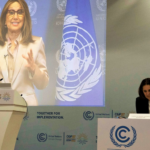Description
The UNCTAD Commodities Branch has recently produced a report on industrial hemp that provided the background material for a forum on the ecological properties and economic potential of this commodity.
Industrial hemp does not have intoxicating properties. Nonetheless, it remains a controversial plant, as it is often mistakenly associated with use as an intoxicant. However, even though a clear distinction is made between intoxicant and non-intoxicant C. sativa L. products in international treaties, the interpretation of the conventions’ scope is still subject to controversy when coming to the inclusion or not of the various parts of the plants. Legislations in vigour in most countries impede the full exploitation of hemp plants’ potential in their many uses.
The report discusses the many uses of industrial hemp, and how they are reflected in international production and trade statistics. Based on current experiences and empirical expertise, the report also defines the steps that could be taken by developing countries where climate and agronomic characteristics are favourable to cultivate the crop to exploit its economic and social potential.
The report provides some information about production worldwide and trade of industrial hemp products. Overall, about 40 countries currently produce significant quantities of industrial hemp. However, due to a narrow set of hemp products covered by international trade statistics, recorded trade flows do not fully reflect the true size of the global industrial hemp market. Indeed, despite an estimated overall value of about USD 5 billion in 2020, trade in such products, as reported in international trade datasets, amounted to a mere USD 42 million.
Information about prices of hemp products is also scarce. Currently available sources of information are scattered and are not easily comparable. However, some patterns emerge within the sector. Important price differences exist between raw, semi-processed hemp, hemp yarn and more sophisticated derivative products.
To fully exploit the potential of industrial hemp, countries would need to take specific actions. For instance, a clarification of the legal status of hemp as distinct from intoxicant cannabis substances could be the first step taken by governments. A precise understanding of production constraints imposed by regulatory frameworks in destination markets would also be necessary to identify market potential. Regional cooperation to facilitate the establishment of production chains may also be a strategy for developing countries to consider.
The workshop was highly attended in the meeting room and online and benefited simultaneous interpretation in English and French. Audio recordings and presentations made by panellits are made available on this website.









